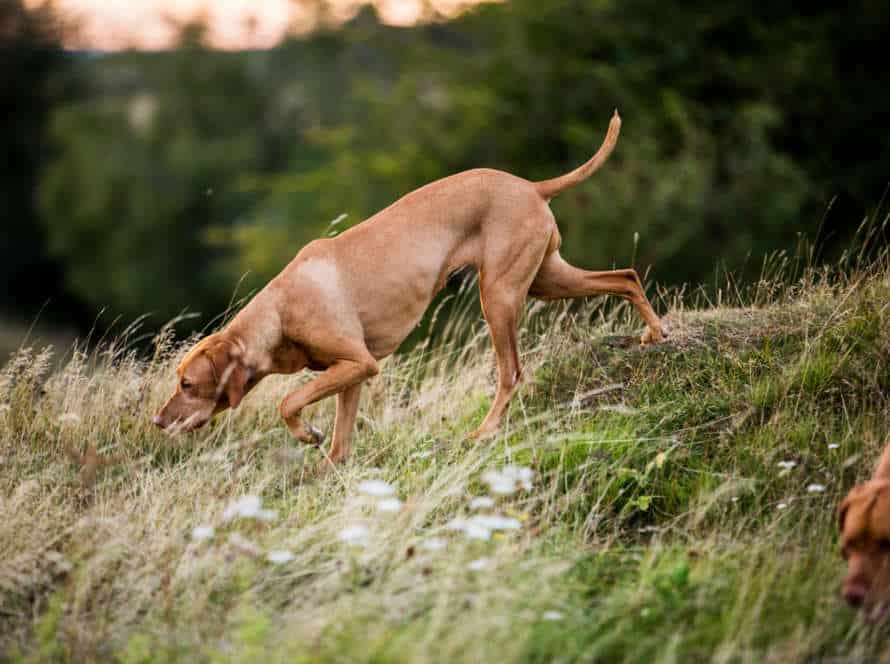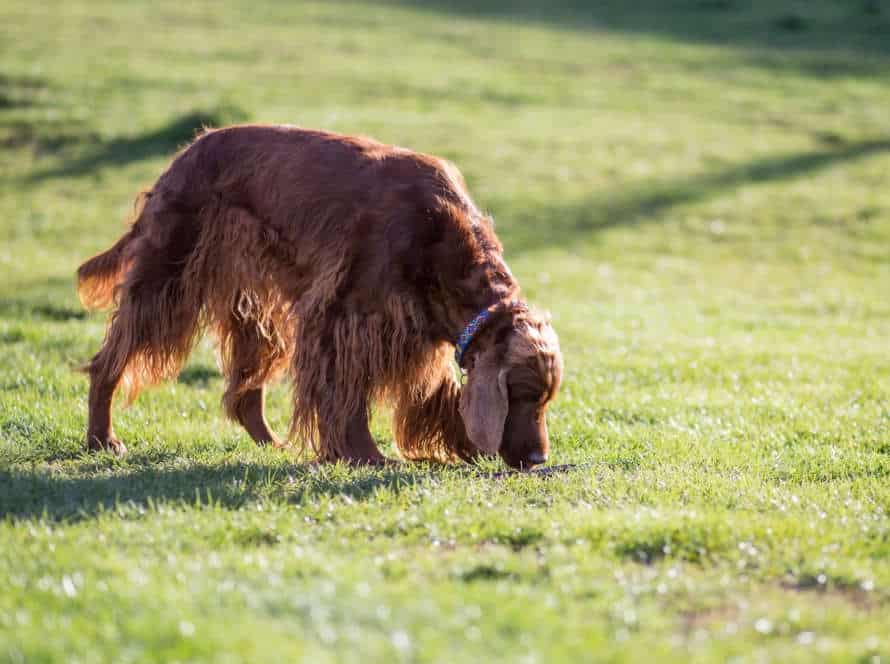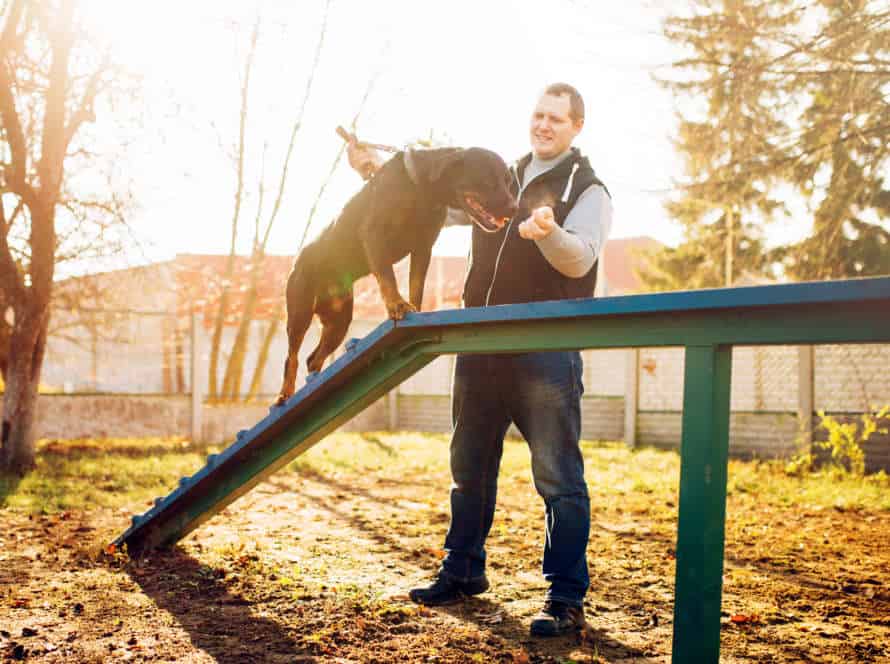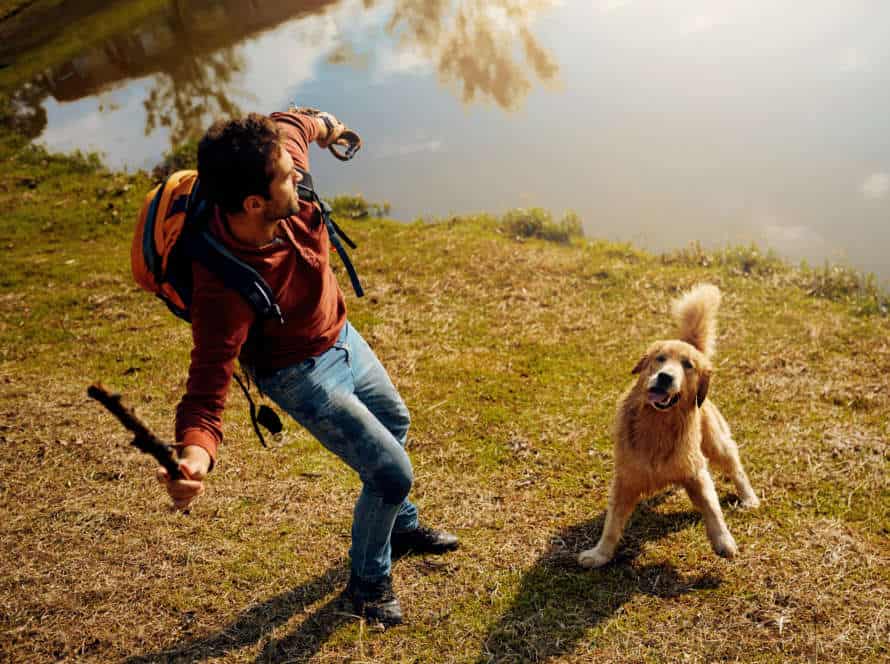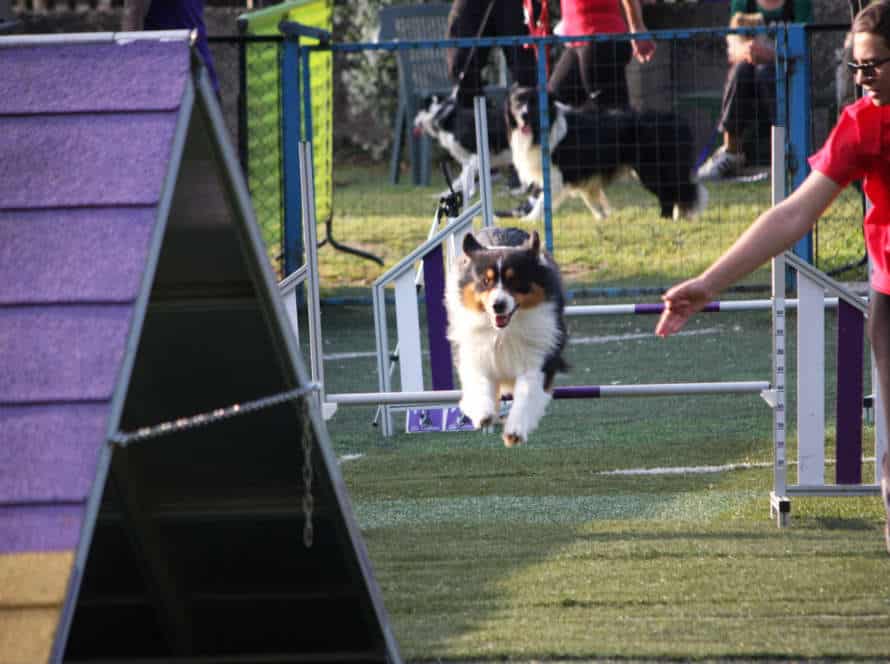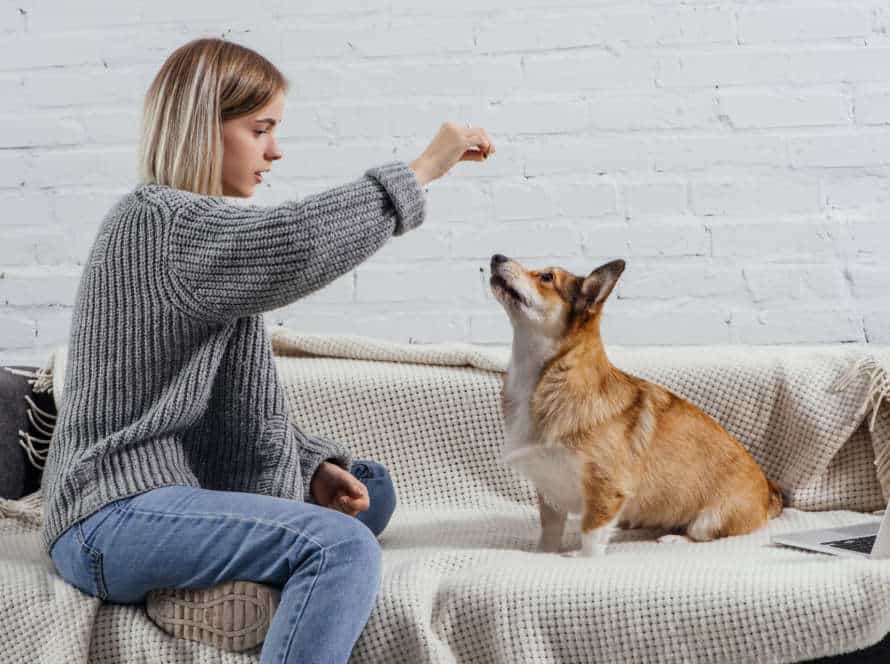Enhancing Obedience: Trick Training for Better Behavior
Trick training can be amusing and useful for increasing your pup’s obedience. Teach them fresh tricks and you can enhance their conduct and make a stronger connection with them. Here are some examples:
- “Sit Pretty”: Get your pup to balance on their back legs, to reinforce their core and overall balance. Doing this can also assist them to concentrate and remain still in an excited situation.
- “Shake”: Teaching your pup to shake hands is a classic trick that helps them learn to hold back their urges and obey commands.
- “Roll Over”: This trick educates your pup to follow orders while in motion, and to trust you to direct their actions.
Adding trick training to your obedience routine can be an amusing and captivating way to enhance your pup’s behavior and reinforce your bond with them.
Pro Tip: Use rewards such as treats, verbal appreciation, and petting to motivate your pup’s development during trick training.
The Benefits of Trick Training for Dogs
Training your pup can be tricky but worth it! Teaching them tricks is a blast, as well as a great way to reinforce obedience and improve behavior. Trick Training is an awesome way to create a strong bond between you and your pet. Plus, it helps your pup learn commands and expectations. Here, we’ll explore the advantages of trick training for dogs and how to get started.
Mental Stimulation and Enrichment for Canines
Trick training is a great way to give mental stimulation and enrich the lives of dogs while improving their obedience and behavior. Here are the benefits:
- Mental Stimulation: It helps your dog’s brain, making them smarter, more focused and better problem solvers.
- Bonding: It strengthens the connection between pet and owner, creating positivity and trust.
- Better Behavior: It can distract from bad behaviors and reinforce good ones.
- Obedience & Control: It can be used as a base for basic commands.
- Fun & Entertainment: It’s an enjoyable way to make your pet happier.
Pro Tip: Keep the sessions short, use treats to motivate and practice regularly for best results. Your pup will soon be performing impressive tricks!
Trick Training as a Bonding Activity between Dogs and Owners
Trick training can be a fun and effective way to improve a dog’s behavior and obedience skills, while simultaneously strengthening the bond between them and their owners.
Benefits of trick training include:
- Mental Stimulation: This keeps your dog from becoming bored or destructive.
- Improved Behavior: It teaches basic obedience skills like sit and stay.
- Strengthening Bond: Positive reinforcement and regular training sessions deepen the bond.
Use treats, praise, and affection during trick training for best results.
Improved Obedience in Everyday Life
Trick training is a great way to improve your pup’s obedience and behavior. Here are some benefits:
- Mental stimulation – It keeps them active mentally, reducing boredom and destructive behavior.
- Better obedience – Trick training strengthens basic commands like ‘sit’, ‘stay’ and ‘come’. It also stops bad behavior like jumping on people or furniture.
- Bonding – You can bond with your pup through trick training, based on trust and respect.
- Fun for all – It’s enjoyable for both dog and owner, and strengthens the bond between you two.
- Pro Tip – Use positive reinforcement like treats, toys and verbal praise. Keep sessions short and positive to hold your dog’s interest.
Selecting Tricks Suitable for Your Dog
Choosing tricks to teach your pup is a must for successful obedience. All kinds of doggos- big, small, young, or old- can be taught with the right motivation. When selecting tricks for your pup, make sure they understand it and have fun!
Taking Age and Physical Capabilities into Consideration
When picking tricks for your pup, remember their age and physical capabilities. For older dogs, or those with physical issues, go with tricks that don’t need lots of running, jumping or balancing. Think “shake hands,” “roll over,” or “play dead.”
For younger pups, physical activity tricks may be ok. But take into account their energy levels and abilities. Examples include “fetch,” “spin around,” or “jumping through a hoop.”
Always supervise your dog during trick training. And reward good behavior with positive reinforcement.
Considering Your Dog’s Temperament and Personality
Before teaching pup fresh tricks, think about their temperament and personality. This way, training will be fun and effective for both of you. Here are things to keep in mind:
- Age: Younger dogs have a short attention span. Older dogs may have physical limitations.
- Learning style: Dogs have different learning styles. Some learn from visuals, others from verbal commands.
- Breed: Dog breeds have different temperaments and personalities. Working breeds may need more challenging tricks, while smaller breeds may be better with agility and coordination.
- Personality: Shy or nervous dogs need gentle training. Confident or outgoing dogs can handle more challenging exercises.
- Think about pup’s special traits. This will help with obedience, behavior, and deepen your bond.
Prioritizing Tricks Relevant to Your Day-to-Day Routine with Your Dog
Teaching tricks to your pup is essential. Not just for fun – but it can also boost obedience and behavior. Pick tricks related to your daily life with your pet.
Here are five to try:
- “Sit”: Easy to teach and a great start for obedience training.
- “Stay”: Stops your dog running off or getting into danger.
- “Come”: Very important in emergencies.
- “Leave it”: Helps avoid them eating something bad.
- “Heel”: Walk calmly close to you, no pulling on the leash.
Prioritize these tricks for a happier, healthier furry friend!
Basic Tricks to Start With
Teaching your pup obedience commands? Not just beneficial for their health and safety, but fun too! Bond with them while training tricks. Here are some basics to get started. Plus, tips and advice for successful trick training. Enjoy!
“Sit” and “Stay” Commands as Prerequisites for Further Trick Training
Before teaching more complex tricks to your dog, it’s essential to show them basic commands such as “sit” and “stay.” These commands form the basis for learning more complicated tricks, and can also enhance their behavior and obedience.
Here are some starter tricks:
- Sit: Hold a treat near your dog’s nose, then gently move the treat over their head. As their nose follows the treat, their bottom will lower to the ground. Say “sit” at this point and reward them with the treat.
- Stay: After your dog has learned “sit,” start teaching them “stay.” Command “sit,” then raise your hand in front of them and say “stay.” Gradually increase the time they remain in that position before rewarding them.
Once these basic commands are mastered, you can start teaching more challenging tricks such as “roll over” and “play dead.” Always reward them positively and keep training sessions enjoyable and short.
“High-Five” and “Shake” Commands as Entry-Level Tricks
Training your pooch to “high five” or “shake” is a great way to give them a fun lesson in basic tricks and obedience! Here’s how:
- For “high five”: Hold a toy or treat in your hand as a focus. Touch your pup’s paw and say “high five”. Give them a treat and heaps of praise when they lift their paw to touch the target.
- Keep repeating, taking away the toy and treats until your dog can do it on command.
- For “shake”: Do the same as above, but say “shake”. As they learn, take away the toy/treats until your pup can do it on command.
Training tricks not only aids your pup’s behavior, but strengthens your bond with them too. Don’t forget to use treats and positive reinforcement to make it more fun for your furry friend!
“Roll-Over” and “Play Dead” Commands as More Advanced Tricks
“Roll-Over” and “Play Dead” are advanced tricks that need patience and practice. For starters, try teaching “Sit”. Say “sit” to your dog while it’s standing, then use a treat to get them to sit. After they can do it on command, move on to “Stay”. Say the word and take a step back. Reward your pup if they stay still. Next, do “Shake”. Hold out your hand, palm up, and tell ’em to “shake”. They’ll probably paw at your hand. Treat them after.
Doing basic tricks helps build your pup’s confidence and makes your bond stronger. Once you’ve got the basics mastered, you can move onto more complex tricks like roll-over and play dead. Bonus tip: Tricks help improve your dog’s behavior!
Positive Reinforcement for Trick Training
Positive reinforcement is a great way to get your pup learning new tricks. Reward them for desired behavior! Give a treat or pat on the head when they obey. This encourages them to repeat the behavior for more rewards. It’s important to give proper rewards for learning and remembering the trick. In this article, we’ll discuss how positive reinforcement helps with obedience in trick training.
Utilizing Treats and Verbal Praise for Motivation
Utilize treats and verbal praise to effectively train your pup. Positive reinforcement is key! Give your pup a yummy snack and some verbal love when they do something good. Here are some tips:
- Pick a treat your pup loves, like cooked chicken or cheese.
- Immediately give the treat after your pup does the desired behavior.
- Use a clicker or verbal cue, like “good boy!“
- Repeat the process, slowly reducing the treats as your pup learns the trick or behavior.
- Be patient and consistent. Positive reinforcement takes time and practice. With regular training sessions, your pup will be excited to learn and obey your commands.
Avoiding Punishment and Negative Reinforcement during Trick Training
To stop using punishment and negative reinforcement when teaching tricks, positive reinforcement is the answer. For successful results, keep these tips in mind:
- Reward desired behavior with treats, toys, or praise.
- Divide tricks into small, doable pieces.
- Be consistent with rewards and techniques.
- Make learning fun and engaging.
This kind of training strengthens the bond between you and your pet by building trust, respect, and communication. Using positive reinforcement leads to enjoyable learning, improved obedience, and better behavior.
Incorporating Clicker Training for Efficient Positive Reinforcement
Clicker training is a great way to positively reinforce tricks and obedience for pets. By using this technique, owners can teach their pets new tricks and behaviors while strengthening the connection between them.
Here’s how to use it for effective reinforcement:
- Select a clicker and positive treats.
- Get your pet to recognize the clicker sound with a reward.
- Train your pet with commands, using the clicker to mark the behavior you want to reinforce.
- Train each trick or behavior separately. Then, increase difficulty as your pet learns each one.
Clicker training helps increase confidence, cognitive skills, and obedience in pets. Plus, it’s a great way to strengthen the bond between owner and pet.
Pro Tip: Keep sessions short and upbeat. And, always end on a good note to keep your pet engaged and motivated.
Troubleshooting Challenges in Trick Training
Trainers that focus on trick training can hit roadblocks when trying to teach their four-legged pal a new skill. Common issues include: not understanding cues, not engaging the pup and not being persistent enough.
Here’s a look into how to solve these troubles and how to use trick training to better obedience.
Addressing Distractions and Loss of Focus during Training Sessions
Trainings can be tricky – they can be full of distractions and loss of focus! Here are some tips to help keep your pup on track:
- Start small – begin in a quiet place with few distractions, then increase the level of distraction gradually.
- Exercise daily to reduce energy levels and stop restlessness during sessions.
- Take breaks when boredom or restlessness strikes.
- Positive reinforcement rules – cuddles and treats can keep focus, while harsh punishments will kill motivation.
Pro Tip: Training your pup needs patience and time, so stay consistent and patient with your commands!
Finding Alternative Methods for Commands that Do Not Work for Your Dog
Trick training for dogs isn’t always simple. If your pup is struggling, don’t give up! Here are a few alternative methods to try:
- Break the trick down into simpler steps.
- Reward your pup differently – with a toy or special treat.
- Switch up the training location for a new atmosphere.
- Change the gesture or voice command related to the trick.
- Use a clicker to help communicate effectively.
Remember, each dog is unique. Patience and consistency in training will help keep it fun.
Adjusting Training Strategies to Accommodate Dogs with Specific Behavioral Challenges.
Training dogs with certain behavioral issues can be tough. But, strategies can be tweaked to help them. Tips for adjusting training tactics include:
- Breaking tricks into smaller components, so the dog can understand and remember them.
- Rewarding the pup with high-value treats, toys, or praises to motivate them.
- Taking pauses between sessions to avoid burnout.
- Keeping the fun alive as you use positive reinforcement training.
- Not using punishment-based approaches as they can worsen behavioral issues.
Patience and consistency are the keys to training any dog with behavioral problems. Tailor the approach to the pup’s individual needs for success.
Frequently Asked Questions
Q: What is trick training?
A: Trick training is a type of training that involves teaching dogs new, fun behaviors such as rolling over, giving hi-fives or even dance moves.
Q: How can trick training help with obedience?
A: Trick training can help with obedience by improving a dog’s focus, impulse control, and communication skills. It can also strengthen the bond between the owner and their dog.
Q: Can any dog learn tricks?
A: Yes, any dog can learn tricks as long as they are physically able to perform them. Breed or size does not matter.
Q: How do I start trick training?
A: First, choose a few simple tricks to start with, such as “sit” or “shake”. Then, use positive reinforcement, consistency and patience to teach the trick. You can also enroll in a trick training class or hire a professional trainer.
Q: Are there any risks associated with trick training?
A: Trick training is generally safe, but it’s important to make sure your dog is physically fit to perform the tricks. Always start with simple tricks and work your way up gradually.
Q: Can trick training be fun for both the owner and the dog?
A: Absolutely! Trick training can be a fun and rewarding activity for both the owner and the dog. It’s a great way to bond with your pet and provide mental stimulation.


